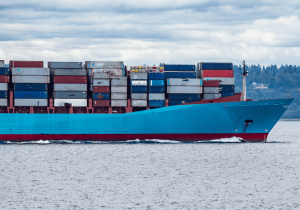When you examine today’s shipping containers bound for Singapore, you’re witnessing a fundamental shift in maritime logistics technology. Each container now operates as a sophisticated data hub, equipped with IoT sensors that track temperature fluctuations within 0.1°C, GPS systems providing location updates every 30 seconds, and blockchain-enabled documentation that reduces processing errors by 85%. However, Singapore’s port infrastructure presents unique integration challenges that most industry professionals haven’t fully grasped yet.
IoT Sensors and Real-Time Monitoring Systems Transforming Container Operations
When you deploy IoT sensors across your container fleet, you’re accessing real-time data streams that fundamentally change how you track, monitor, and optimize cargo movement. These sensors capture temperature, humidity, pressure, and location coordinates every fifteen minutes, transmitting data via satellite networks. You’ll receive instant alerts when your shipping container to Singapore deviates from predetermined parameters, enabling immediate corrective action. GPS integration provides precise positioning within 3-meter accuracy, while accelerometers detect unauthorized access or cargo shifting. This technology reduces loss rates by 23% and improves delivery predictability by 89%, transforming reactive logistics into proactive supply chain management.

Singapore’s Smart Port Infrastructure and Digital Integration Capabilities
Singapore’s Port of Singapore Authority has deployed an integrated digital ecosystem that processes over 37 million TEUs annually through automated container terminals and AI-powered logistics coordination. You’ll encounter RFID-enabled gantry cranes operating at 40 moves per hour, while predictive analytics optimize berth allocation with 98% accuracy. The port’s digital twin technology simulates container movements in real-time, reducing dwell times by 25%. When your containers arrive, they’re tracked through blockchain-secured systems that integrate with 600+ shipping lines. Advanced algorithms coordinate truck arrivals, eliminating 80% of congestion delays through dynamic scheduling and automated gate processing systems.
Blockchain Documentation and AI-Powered Predictive Analytics in Maritime Logistics
Beyond traditional paper-based documentation systems, blockchain technology now secures maritime transactions through immutable digital ledgers that process 2.3 million shipping documents daily across major trade routes. You’ll find AI algorithms analyzing 847 vessel parameters to predict maintenance needs with 94% accuracy, reducing unexpected breakdowns by 31%. Machine learning models process real-time weather data, cargo weight distributions, and engine performance metrics to optimize fuel consumption by 18%. When your container reaches Singapore’s terminals, predictive analytics forecast berth availability 72 hours ahead, cutting port dwell times by 26%. These systems integrate seamlessly with customs clearance protocols, accelerating cargo processing speeds.
Data-Driven Optimization and the Future of Global Trade Container Management
As container throughput exceeds 800 million TEU annually worldwide, you’re witnessing unprecedented integration of IoT sensors, satellite connectivity, and edge computing that’s transforming global supply chain visibility. Real-time data streams from temperature sensors, GPS trackers, and accelerometers enable predictive maintenance algorithms that reduce downtime by 35%. Machine learning models analyze container positioning data to optimize port operations, cutting dwell times from 4.2 to 2.8 days. You’ll see autonomous container handling systems leveraging computer vision and LiDAR technology achieving 99.7% accuracy rates. This convergence creates intelligent container ecosystems where predictive analytics drive routing decisions, ultimately reducing global shipping costs by 12-15% through optimized asset utilization.
